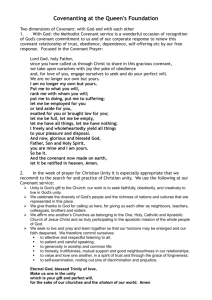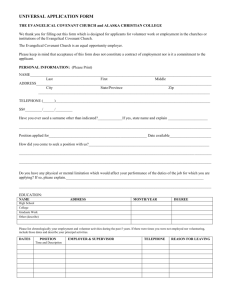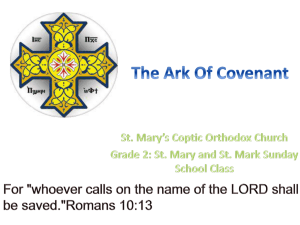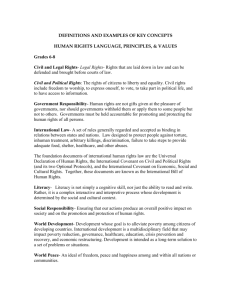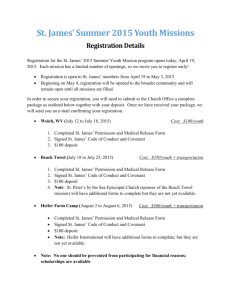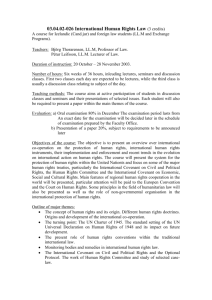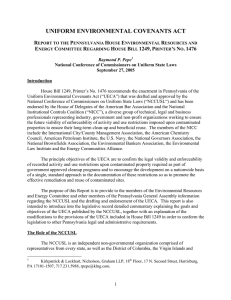Uniform Environmental Covenants Act
advertisement
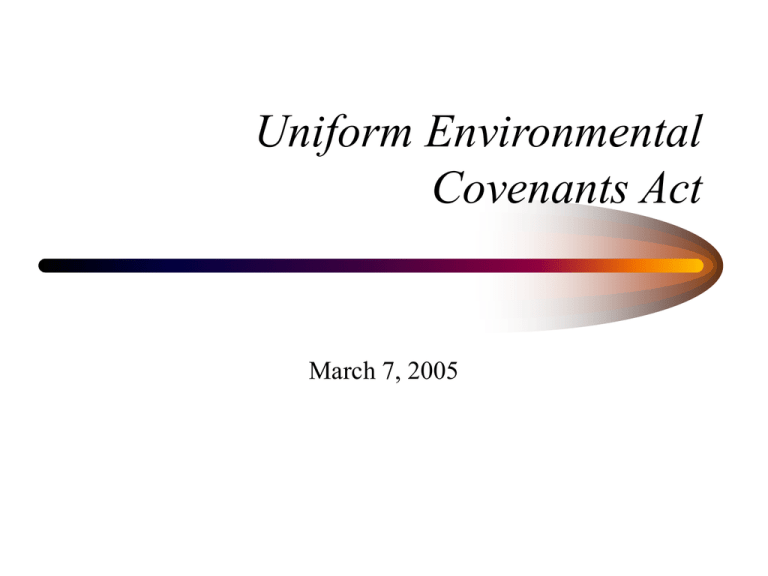
Uniform Environmental Covenants Act March 7, 2005 Drafting Process • NCCUSL • Advisors • Process Overview: Four main legal problems the Act resolves. 1. Creation of an Environmental Covenant 2. Legal Problems in making it valid and permanent 3. Changing the Covenant 4. Enforcing the Covenant 1. Creation of An Environmental Covenant: • How clean must the land be? – Determined by a cleanup plan under existing environmental law, whether regulatory or supervised voluntary 1. Creation: What is required to have a Covenant? §4(a) • Describe the land use restrictions and any affirmative requirements • Agreement by the owner, the agency, and the holder • Recording §8 – Registry system. §12 What else can you put in it? §4(b) suggests the following: • • • • Notice of change of ownership or land use Periodic reporting on the land use Access rights for various parties Description of the location and details of remaining contaminants, pathways of exposure, exposure limits • Other rights or duties of the holder 2. Legal Problems in making it valid and permanent • The Covenant runs with the land and is intended to be perpetual, until terminated under the Act. §5(a) and §9(a) • The Act takes care of technical common law rules that would present problems §5(b) 2. Legal Problems (cont) • State tax liens and foreclosures, adverse possession, and similar doctrines do not override the covenant §9(c) • Marketable Title Act or Dormant Mineral Interests Act §9(d) 2. Legal Problems (cont) • Eminent domain and the “doctrine of changed circumstances” can override the Covenant only in special situations. §§9(a)(5) and(b) • Existing mortgages are not overridden by the Act: e.g. old lenders mortgages. – However, the agency will usually require mortgage owner to subordinate its interest. §3(d)(1) 3. Changing the Covenant: These parties must consent : • • • • The Agency The current owner The holder Everyone who originally signed, unless a court determines they can’t be found 3. Changing the Covenant (Cont) • An amendment can affect an interest in the land only if the owner of that interest consents to it • Special provisions on changing the holder and assigning to a new holder • Regardless of this Act, the agency can reopen the underlying cleanup plan 4. Enforcing the Covenant §11: Who can enforce? • The agency • Any party to the Covenant, and any person expressly granted enforcement rights • The local government where the land is located • Any person whose interest or collateral in the property may be affected • Any person whose liability may be affected. 4. Enforcing the Covenant (Cont) • The Act provides a civil action for an injunction • Agencies have additional enforcement rights – Under other environmental law – Under the cleanup remedy Major Issues in Implementation • Long term enforcement • Long term institutional knowledge and memory • Will the cleanup level be sufficient? Necessary? • Technical legal problems in making and enforcing
